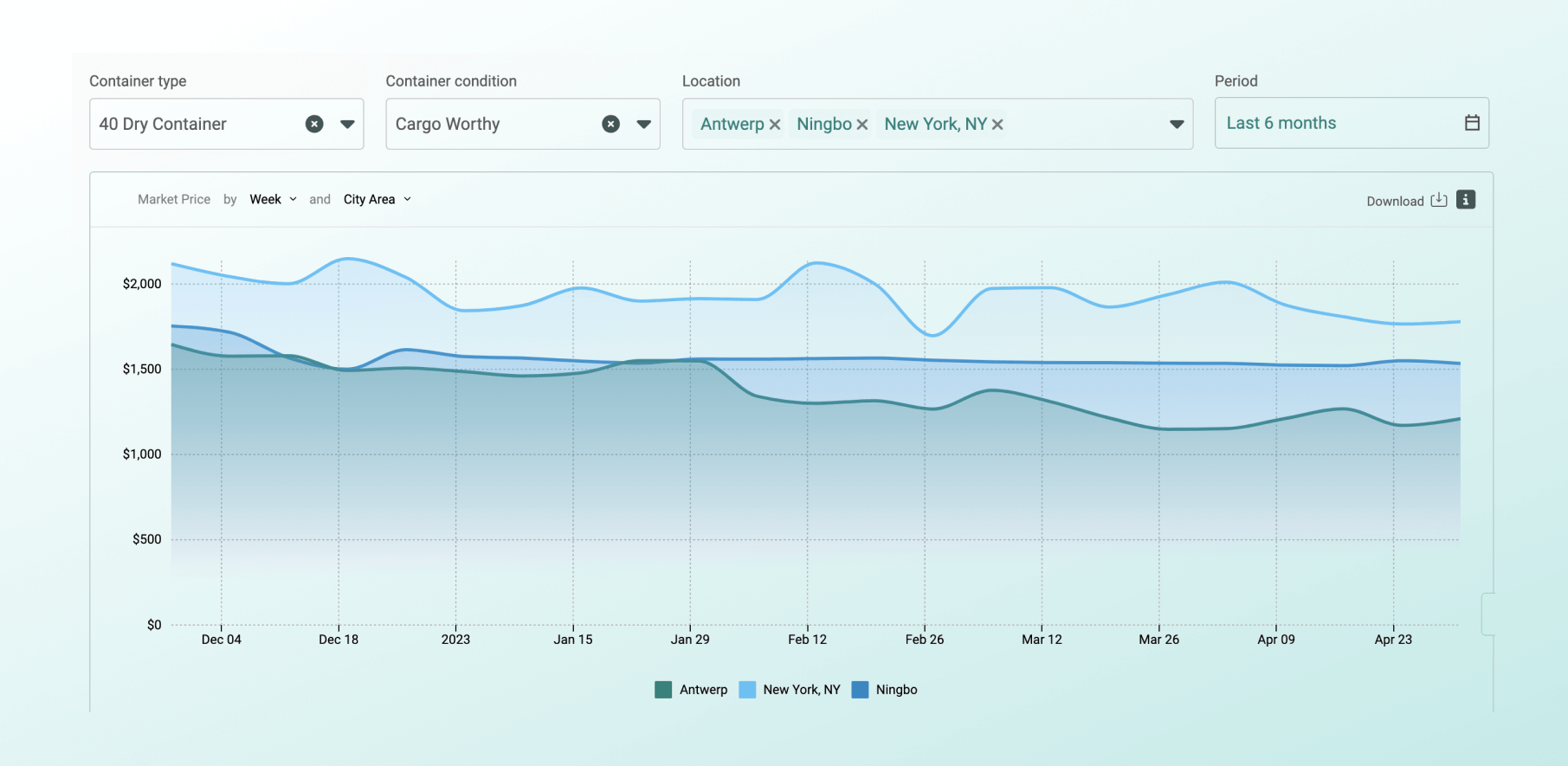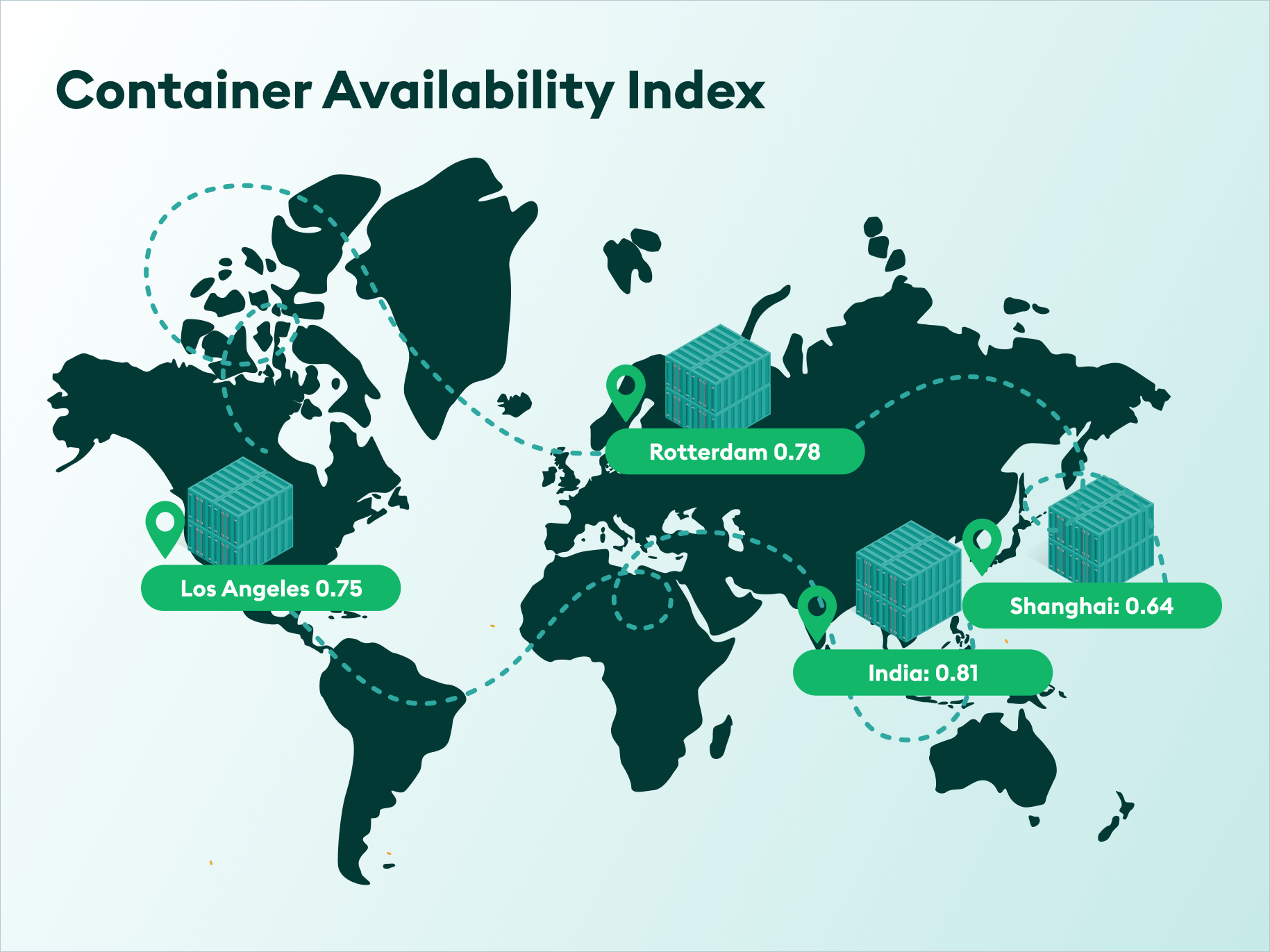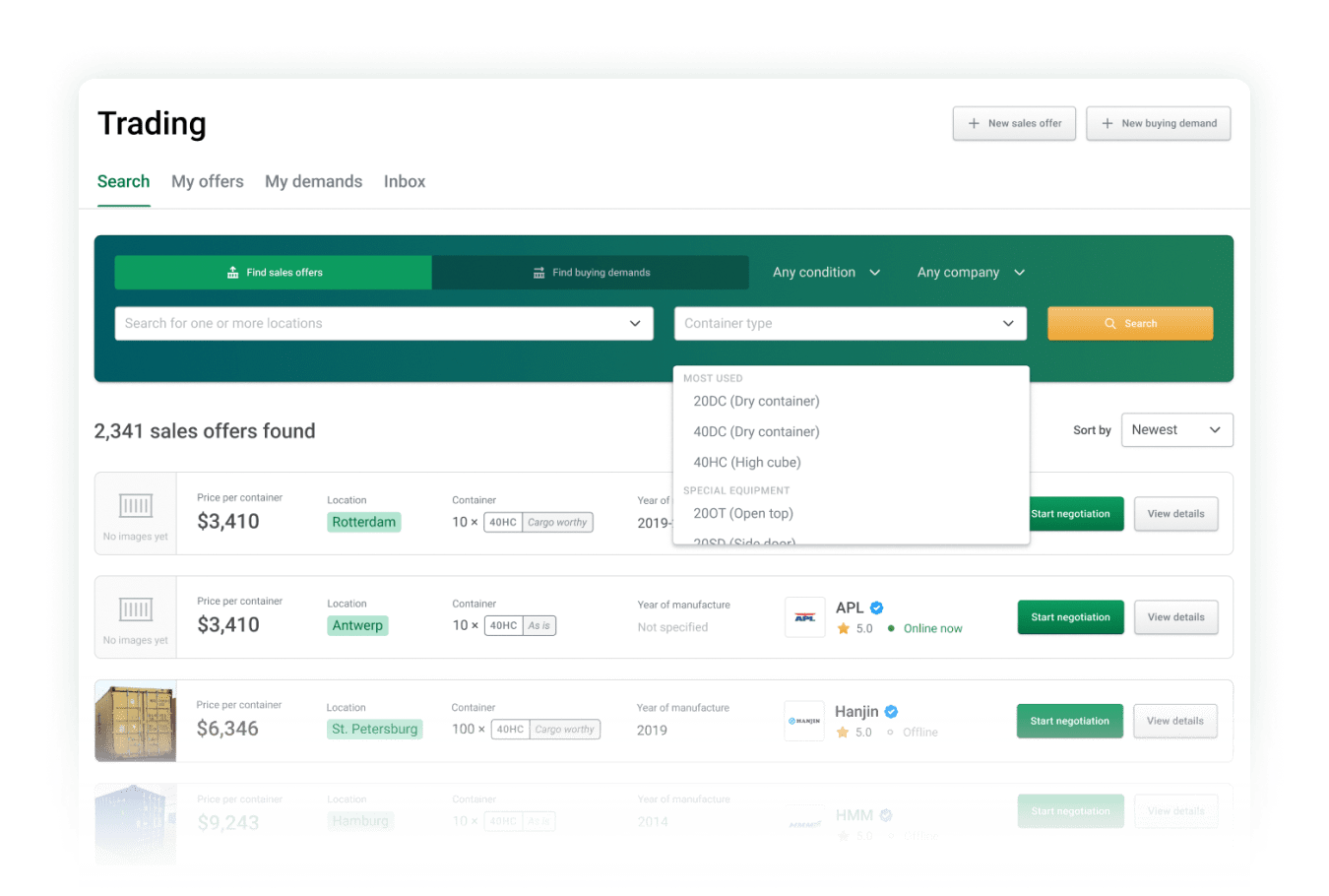empty shipping container for sale July 28, 2023 – Posted in: Uncategorized
Empty Shipping Containers: A Comprehensive Guide to Buying and Avoiding Repositioning


empty shipping container for sale
Empty shipping containers play a vital role in global trade, with every third container shipped around the world being empty. However, acquiring empty shipping containers can be a challenge due to container imbalances and fluctuations in prices. In this comprehensive guide, we will explore how you can buy empty shipping containers at the best prices and avoid the costly issue of empty container repositioning.
Why Empty Shipping Containers Are in High Demand
The imbalance of empty shipping containers is a common issue in the industry. Some ports experience a surplus of containers, while others face a deficit. This imbalance leads to price fluctuations, making it difficult to find containers that fit your budget in your location. Traditionally, sourcing containers through local networks can be time-consuming and inefficient.
To address these challenges, Container xChange offers an innovative solution. Container xChange is an online container marketplace where you can buy empty shipping containers directly from sellers in 2,500+ locations worldwide. By using this platform, you can access container offers from multiple sellers and compare prices in just a few easy steps. Best of all, there are no commissions involved in the transaction. empty shipping container for sale
To get started, simply use the public search feature on Container xChange. Enter your location and container type to browse through multiple offers from vetted sellers. This allows you to find the best deals on empty shipping containers in your area. empty shipping container for sale
Choosing Between New and Used Containers
Before buying empty shipping containers, it’s important to consider the condition of the container you need. There are two main options to choose from: new containers and used containers.
New Shipping Containers
If you plan to use containers for a long time, such as 15-20 years, investing in a new shipping container is a wise choice. New containers offer prime condition, longevity, and a good resale value. You can always sell a new container in the second-hand container market if needed. However, it’s important to note that new containers are more expensive than used containers. On average, the price for a new 40ft container ranges from $3,000 to $4,500. empty shipping container for sale
Used Shipping Containers
For a more affordable option, you can opt for used shipping containers. These containers may have slight dents and damage but are perfectly fit to ship cargo. Used containers can last for 8 to 10 years and are also commonly used for storage purposes. On Container xChange, you can find used 40ft containers in locations like Toronto for as low as $1,500. By choosing used containers, you can save money without compromising on functionality. empty shipping container for sale
To make an informed decision, consider your budget and the intended use of the container. New containers offer longevity and a good resale value, while used containers provide affordability and functionality.
Factors Affecting the Cost of Empty Shipping Containers
The prices of shipping containers vary based on several factors, including location, supply and demand, and the type of container you’re buying. Here are some average prices for standard cargo-worthy (used) containers in popular locations:
| Location | 20ft Container Price | 40ft Container Price |
|---|---|---|
| Europe | $1,246 | $2,309 |
| China | $1,258 | $1,533 |
| USA | $1,435 | $1,983 |
| India | $966 | $1,929 |
As you can see, prices can significantly vary from one location to another. Container demand in a specific location drives the price of containers. It’s essential to stay updated on the latest market developments and how they impact prices. Container xChange offers a tool called xChange Insights, where you can access real-time container prices in 110+ locations globally. This tool helps you make informed decisions and find the best places to buy containers.

For example, by using xChange Insights, you can see that the price of a 40ft cargo-worthy container in New York is higher than in Antwerp, Belgium. Buying containers from Antwerp can save you around $1,000. With xChange Insights, you can quickly access container prices and use them to negotiate the best deals for your business.
What Happens to Empty Shipping Containers After Delivery
Once a container is discharged at a port, it is transported to the consignee’s distribution center or warehouse. At this point, the container becomes empty. There are three main scenarios for empty shipping containers:
- The containers are loaded with a new batch of cargo and shipped to their new destination.
- They are shipped to a new destination without cargo, resulting in empty container repositioning.
- The containers are piled up at ports and depots, leading to congestion and inefficiencies.
Unfortunately, empty container repositioning is a significant challenge in the shipping industry. Out of the 170 million containers shipped each year, at least 60 million are empty. This imbalance poses a crisis that affects carriers and container owners, leading to increased costs.
Understanding Empty Container Repositioning
Empty container repositioning refers to the movement of empty containers from locations with a surplus to locations with a deficit. Carriers transport empty containers from ports without cargo to ports without containers. This process is an attempt to balance the container supply and demand.
The Container Availability Index (CAx) is a valuable tool for monitoring the import and export of full container loads (FCL) at major ports. A CAx reading of 0.5 indicates an equal amount of containers leaving and entering a port in the same week. A reading above 0.5 indicates a container surplus, while a reading below 0.5 indicates a container deficit.

For example, ports like India and Rotterdam have higher CAx values, indicating more empty containers than ports like Los Angeles and Shanghai. This surplus of empty containers at certain ports necessitates their repositioning to locations with container shortages.
Container imbalance is the primary reason for empty container pile-up at ports. Understanding this phenomenon is crucial for addressing the issue and finding alternative solutions to avoid empty container repositioning.
Why Do Empty Containers Pile Up at Ports
Empty container pile-up at ports is not a seasonal or one-time occurrence. Ports like India have consistently maintained a CAx value above 0.5 throughout the year, indicating a surplus of empty shipping containers.
China, as a major manufacturing hub, mainly exports raw materials and goods from ports like Shanghai. The high export volume results in fewer empty shipping containers available at Chinese ports, leading to a lower CAx value.
In contrast, India has a higher import volume than export. As a result, the country faces a pile-up of empty shipping containers. This surplus has driven down the cost of shipping containers in India.
To avoid having your containers buried at a port, you need to consider repositioning them. However, empty container repositioning comes with significant costs. Is there a way to move your containers without opting for empty container repositioning? Let’s find out.
Avoiding Empty Container Repositioning
One effective way to avoid empty container repositioning is by making your containers available for one-way leasing. In this arrangement, a shipper uses your container to move their cargo one way. By doing so, they help reposition your container along your desired route, creating a win-win situation.
In some cases, the shipper may even pay you a pick-up charge for leasing your container. However, this is rare, as containers are typically repositioned to locations with high demand.
Renting your containers for one-way leasing allows you to save on freight costs. It also helps address the issue of empty container repositioning. Container xChange offers a one-way leasing platform where you can connect with over 1,500 members waiting to rent your containers. By making your containers available, you can be contacted by vetted users and find mutually beneficial leasing arrangements.
Buying Empty Shipping Containers on Container xChange
If you’re in the business of container trading and want to buy empty shipping containers, Container xChange is the ideal platform for you. Not only can you find the best prices for containers, but the platform also offers additional benefits to enhance your container trading experience.

Container xChange ensures risk-free transactions through a mandatory vetting process for all companies. This means you can do business with confidence, knowing that all xChange members have undergone a thorough evaluation. Additionally, all companies have public profiles where you can see reviews from previous partners, providing an extra layer of security.
The platform also offers secure transactions through the xChange wallet. This ensures that your payments are protected, and the dedicated Customer Service team ensures smooth container operations.
Container xChange’s trading marketplace provides a full overview of available containers, allowing you to find the containers that fit your needs. You can compare prices with other offers and use real-time prices from xChange Insights to negotiate better deals. With over 50,000 containers from 1,500+ vetted sellers, Container xChange offers a single and safe platform for your container trading needs.
Frequently Asked Questions About Empty Shipping Containers
Where are all the empty shipping containers?
Empty shipping containers are typically stacked in inland depots, ports, and other storage locations. They can also be aboard vessels repositioning them to ports where they are needed.
What is the price of a 20ft container?
The price of a 20ft container varies globally, typically ranging between $2,150 and $3,207, depending on container availability.
How much does an empty shipping container cost?
The cost of an empty shipping container depends on availability and equipment type. On average, a cargo-worthy 20ft container may cost between $2,150 and $3,207, while a cargo-worthy 40ft container may cost between $2,550 and $4,525.
Conclusion
Acquiring empty shipping containers can be a complex process due to container imbalances and price fluctuations. However, with Container xChange, you can efficiently buy empty shipping containers at the best prices. By leveraging the online marketplace, you can access offers from multiple sellers, compare prices, and make risk-free transactions. Additionally, by understanding the factors affecting container costs and the challenges of empty container repositioning, you can make informed decisions to optimize your container trading operations. Container xChange provides the tools and resources you need to navigate the world of empty shipping containers and ensure a smooth and cost-effective experience.
